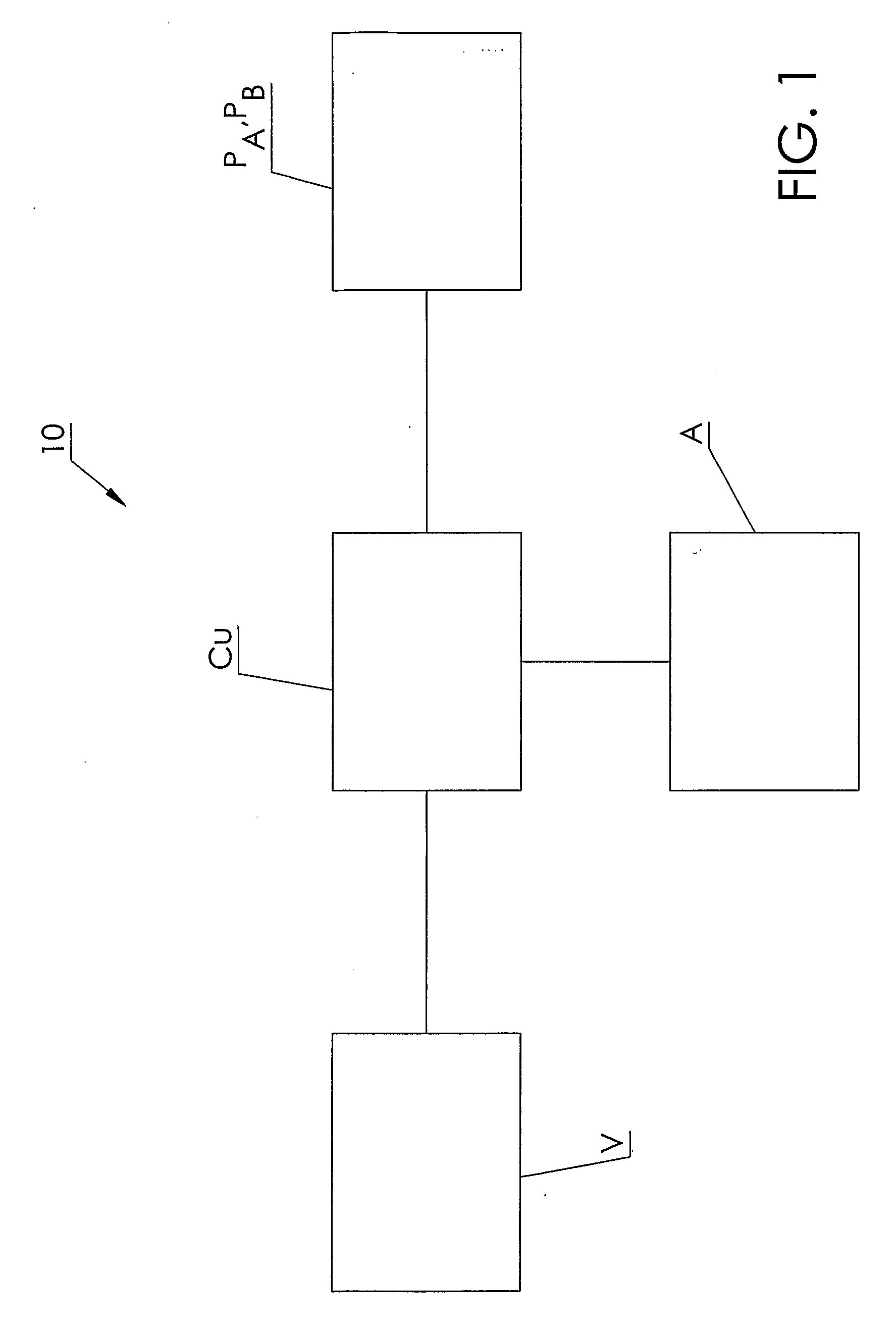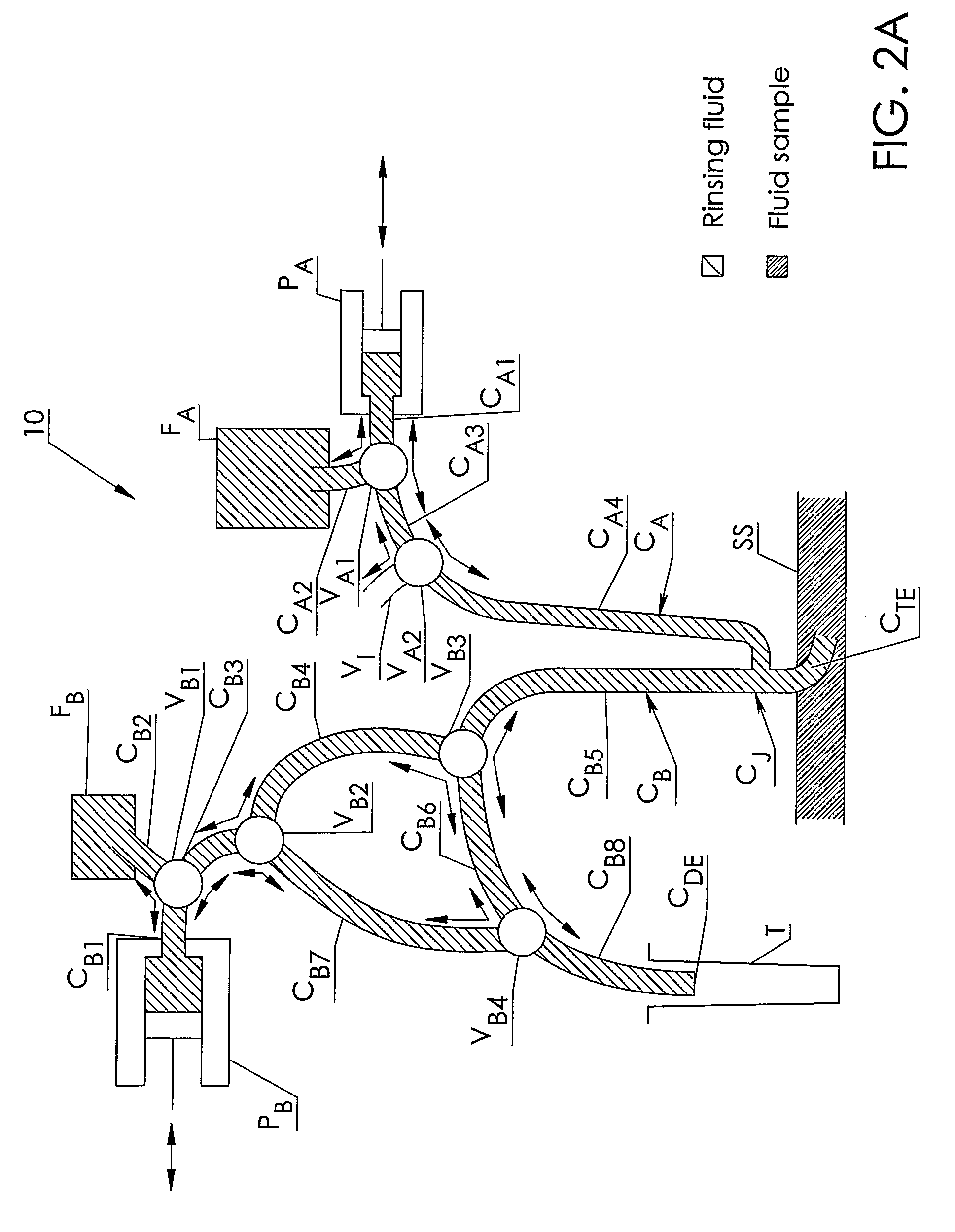System and method for automatic taking of fluid samples
- Summary
- Abstract
- Description
- Claims
- Application Information
AI Technical Summary
Benefits of technology
Problems solved by technology
Method used
Image
Examples
Embodiment Construction
[0017] The present invention will now be described in more detail with reference to the accompanying drawings. FIG. 1 shows an embodiment of a system for automatic taking of specimens according to the invention. The figure schematically illustrates a control unit CU communicatively connected to pumping means PA, PB and a set of valves V. The control unit CU is configured to control the operation of the pumping means PA, PB and the set of valves V. The pumping means can for example be realized as a piston pump or a reciprocating pump. The system 10 according to the figure also comprises an analyzer A communicatively connected to the control unit CU. However, it should be understood that the analyzer can be a separate unit not comprised in the system 10 but instead connected to the system 10. The analyzer A is configured to analyze a taken sample.
[0018] As shown in the FIGS. 2A-2I, the system 10 comprises also flexible tubings, e.g. first and second catheter means CA and CB, respecti...
PUM
 Login to View More
Login to View More Abstract
Description
Claims
Application Information
 Login to View More
Login to View More - R&D
- Intellectual Property
- Life Sciences
- Materials
- Tech Scout
- Unparalleled Data Quality
- Higher Quality Content
- 60% Fewer Hallucinations
Browse by: Latest US Patents, China's latest patents, Technical Efficacy Thesaurus, Application Domain, Technology Topic, Popular Technical Reports.
© 2025 PatSnap. All rights reserved.Legal|Privacy policy|Modern Slavery Act Transparency Statement|Sitemap|About US| Contact US: help@patsnap.com



